How to make vanilla pastry cream (Crème Pâtissière)
By Rebecca St.Clair
This Pastry Cream, or Crème pâtissière, is a rich smooth custard that is silky flavourful and really easy to make.
This versatile recipe can be used in tarts and pies, layered into cakes, a filling for eclairs and profiteroles, or piped into doughnuts.
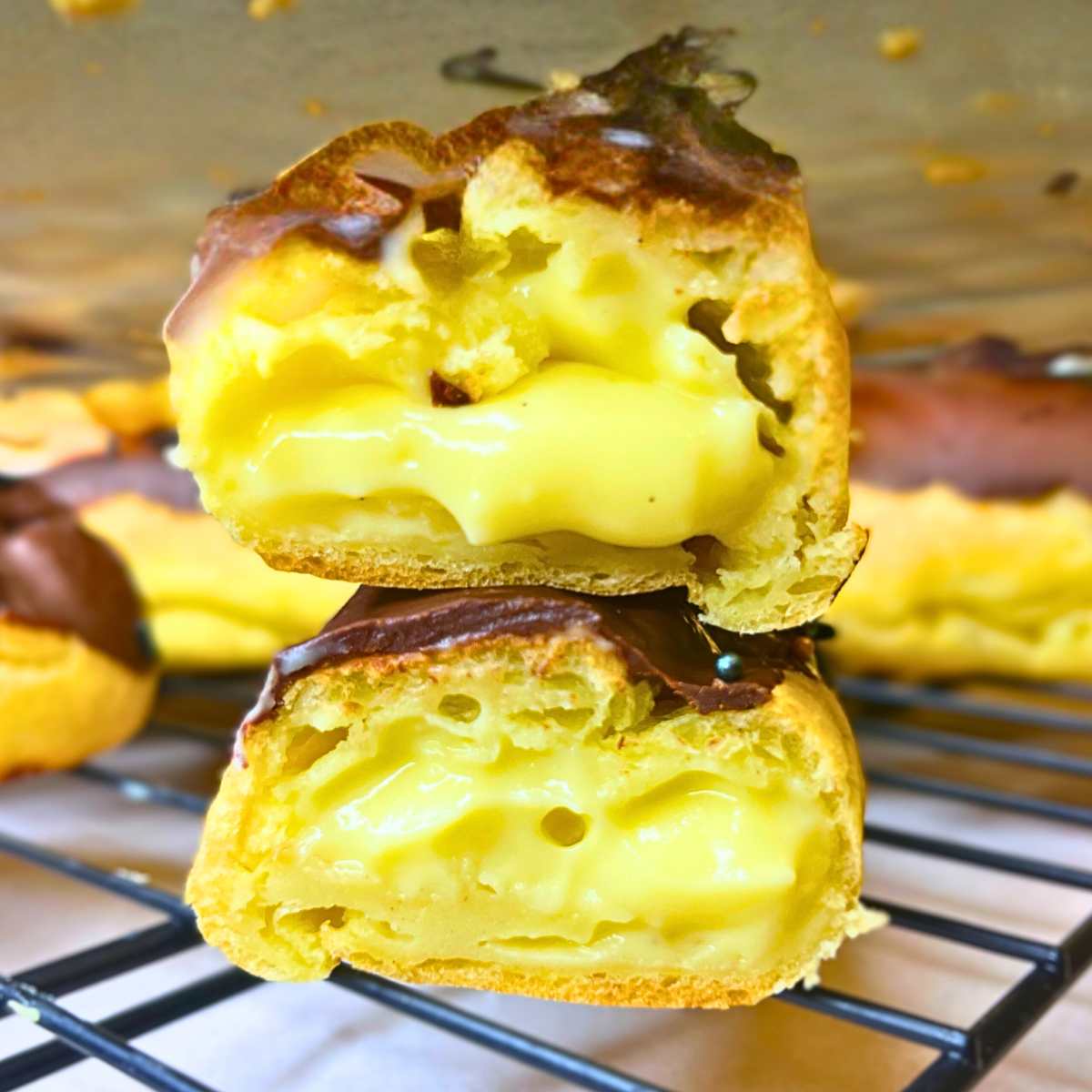
Storing pastry cream
Freezing pastry cream
Leftover pastry cream can be frozen and turned into ice cream. Churn the mixture through an ice cream maker and then store in the freezer.
Pastry cream can also be frozen inside of baked goods and then defrosted before serving. The texture may be altered slightly.
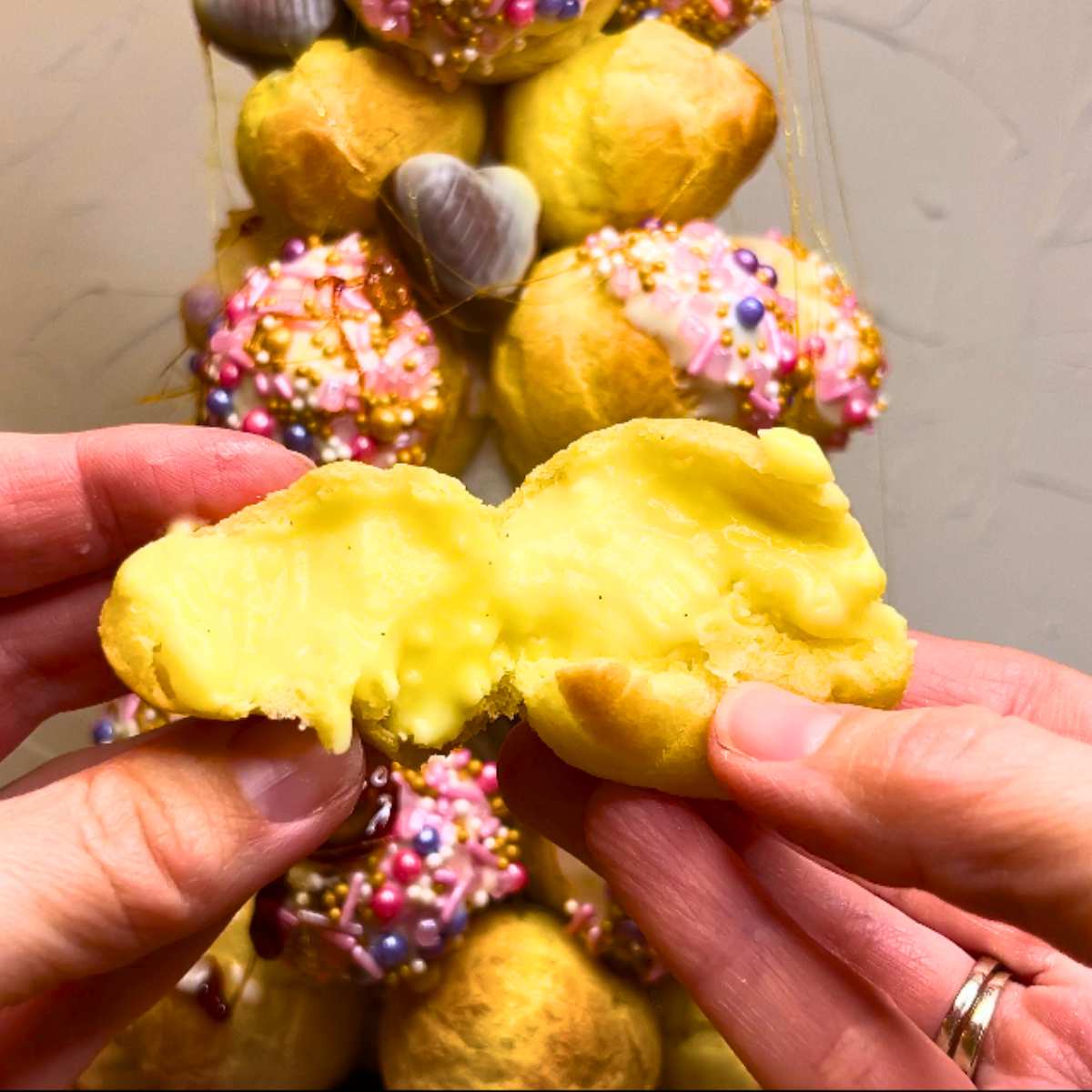
Refrigerator
Pastry cream should be stored in the refrigerator if not consumed within 2 hours.
To store pastry cream in the fridge,
- Place a piece of plastic wrap directly on top of the cream
- The plastic wrap will prevent a skin from forming on top of the cream
- Store in an airtight container
- Store in the fridge for up to 4 days
- When ready to use, it may be stiffer and a little chunky. This is perfectly normal! You have not ruined the pastry cream. To get it ready to add to your recipe, give it a good whisking and it should return back to it’s velvety smooth texture.
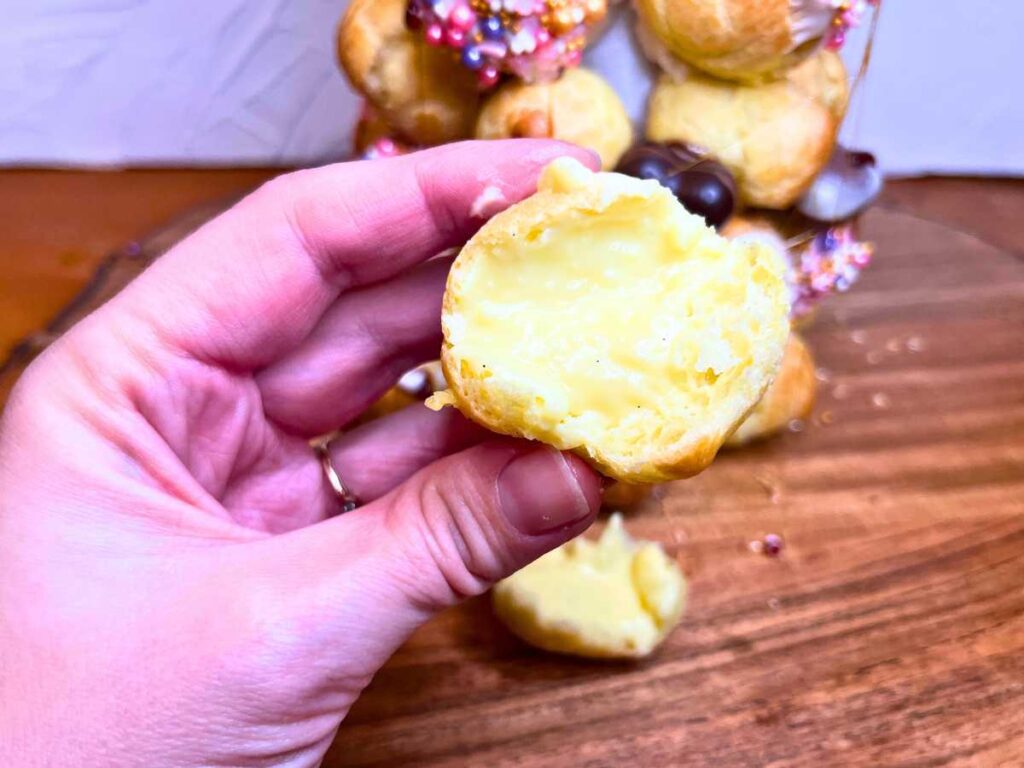
When is pastry cream done?
If you have never made pastry cream before, it can be tricky to know when it is done. It is one of those finicky things like caramel, they go from not done, done perfectly, to overdone in 1 second! So you should be watching and whisking constantly, at this final step.
It will start to thicken within a few seconds of having it back on the heat. You will need to whisk it until it becomes thick and glossy.
It is done when you start to see bubbles break over the surface, from it starting to simmer. If you want it a little thicker continue to stir, one minute, it will just starts to pull away from the edges of the pot as you are mixing. The whole process should only take between 2 and 5 minutes.
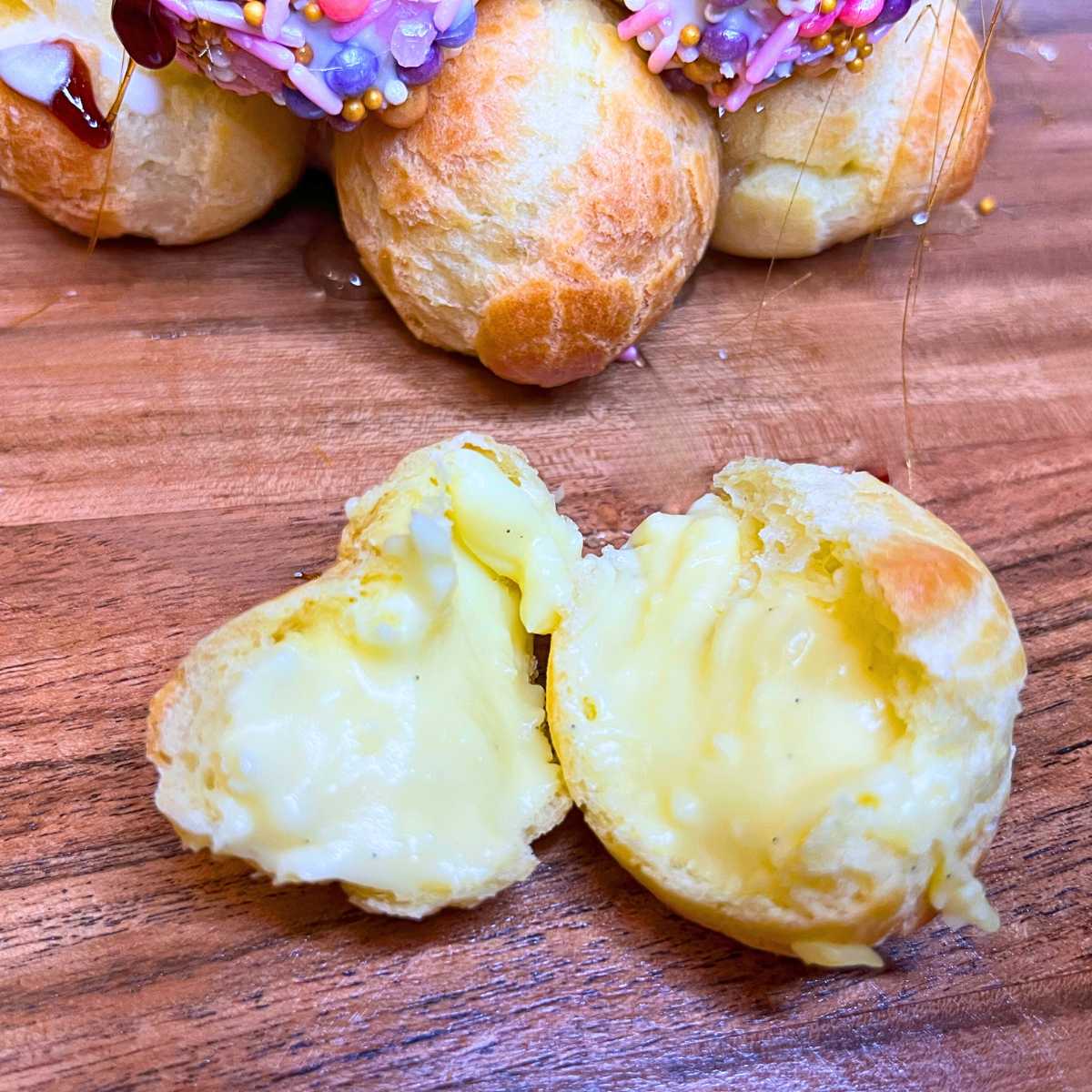
Trouble shooting your pastry cream
Separated pastry cream
This happens for two main reasons. It separated when defrosting it, or it didn’t cook long enough.
Pastry cream will often separate when frozen. Freezing eggs changes the consistency and the mixture will usually separate. Freezing pastry cream for later use is not the best option for storage.
If it separated due to not being cooked long enough, it is because the cornstarch did not cook and the eggs were undercooked.
To solved this problem, return your pot of pastry cream to the stove, on medium heat, and continue to whisk until you see the cream becoming thick and glossy. Bubbles will just start to break over the surface of the cream. Then, it will starts to pull away from the edges of the pot as you are mixing. This whole process should only take between 2 and 5 minutes.
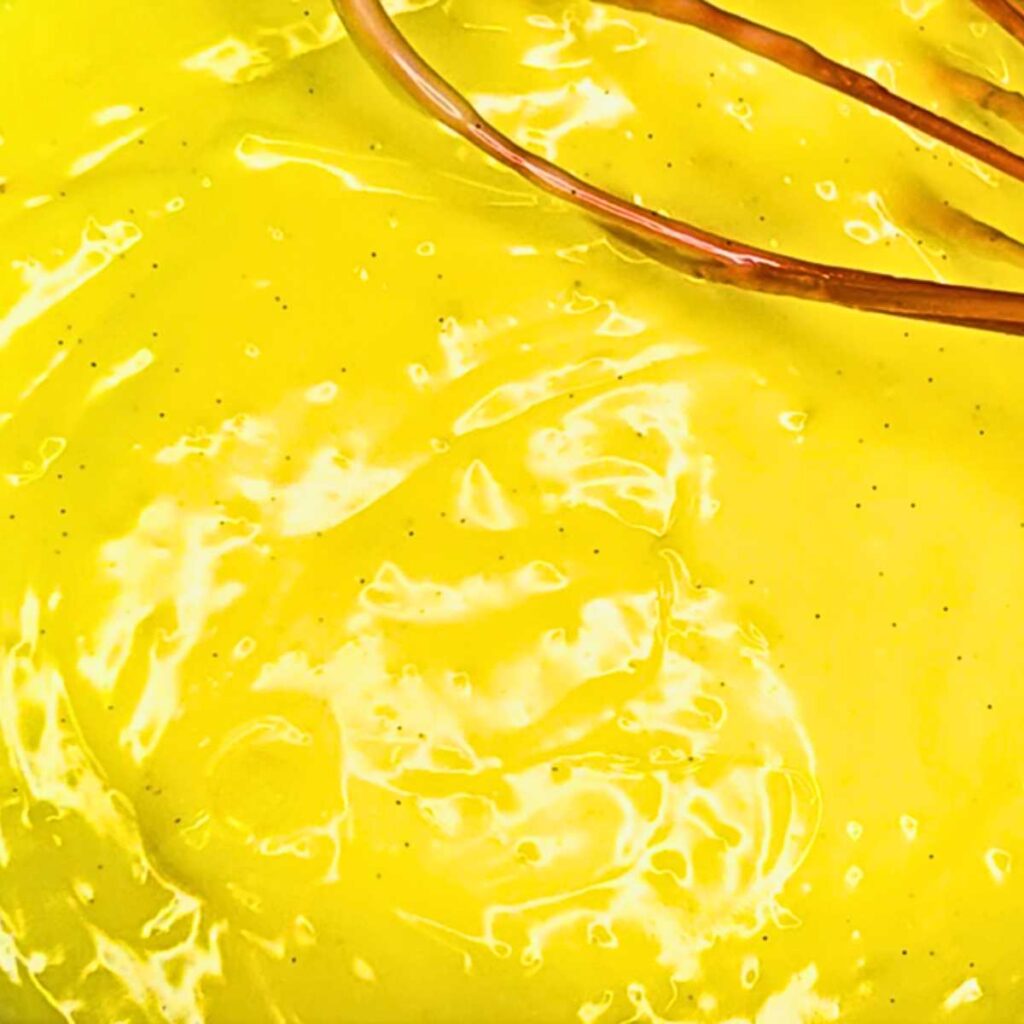
Too Runny
The thickness of the pastry cream comes from the egg yolks. If it is too runny, the most likely culprit is undercooked egg yolks.
To avoid this problem, return your pot of pastry cream to the stove, on medium heat, and continue to whisk until you see the cream becoming thick and glossy. Bubbles will just start to break over the surface of the cream. It will also just starts to pull away from the edges of the pot as you are mixing. This whole process should only take between 2 and 5 minutes.
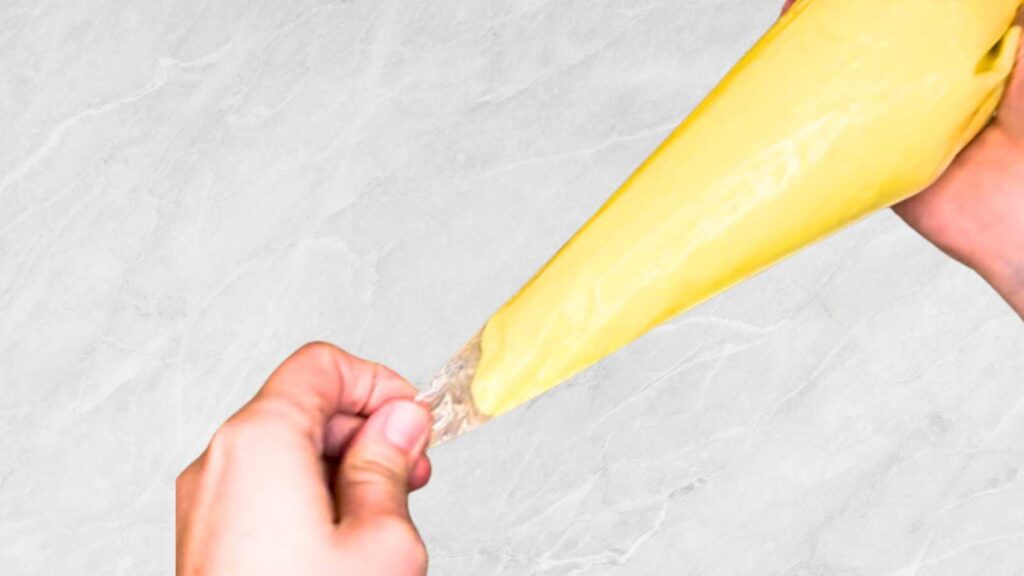
Grainy pastry cream
This could be the result of a few different things, and all have to do with heat.
Grainy pastry cream could be the result of undercooking the sugar and cornstarch. The sugar granules may not be fully dissolved and the cornstarch not cooked, resulting in a grainy texture.
To fix this, return it to medium heat and whisk until thickened, glossy, bubbles break over the surface from it beginning to simmer.
The other more likely culprits go hand in hand. Overcooking, or not tempering the egg mixture.
If the eggs are not tempered, the eggs heat up too quickly. This quick temperature change results in the eggs coagulating, or scrambling.
Likewise, when the pastry cream is left on the heat for too long, the eggs overcook and scramble.
To fix this problem, run it through a fine mesh strainer. This will remove any of the over cooked lumps.

Serving size
The recipe below is enough to fill a full recipe of profiteroles, enough to make a croquembouche. If you are using it for something smaller like layering a cake or inside a fruit pie, you can half or even quarter the recipe.
Diplomat Cream
Turn this pastry cream into a rich and fluffy diplomate cream, or crème diplomat, by folding together equal parts pastry cream and fluffy whipped cream. This is a perfect extra rich and delicious filling for any dessert.
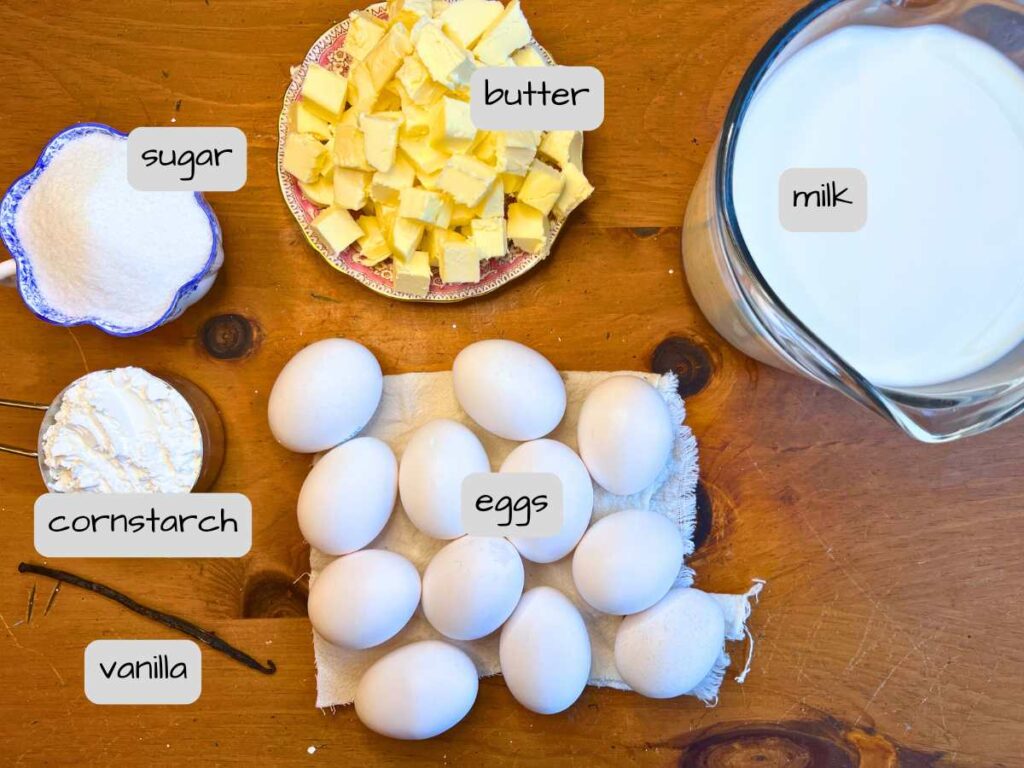
How to make Easy Pastry Cream (Crème Pâtissière)
Ingredients
4 cups milk (Nothing lower than 2%) 1000 ml
Seeds from 1 vanilla bean
¾ cup sugar 150 g
½ cup cornstarch 60 g
12 egg yolks
½ cup cold butter cut into cubes 115 g
Method
Mixing and tempering
- Add the milk to a sauce pot over medium heat.
- Cut open and remove the seeds from one vanilla bean and add to the pot. If you don’t have a vanilla bean use 1 tsp vanilla bean paste, or 2 tsp of vanilla extract.
- Allow the mixture to steam but remove from heat just before you see it start to simmer.
- Remove from heat and set aside to steep with the vanilla.
- Meanwhile, to a medium bowl, add the sugar, cornstarch, and egg yolks. Whisk until the mixture looks light and creamy.

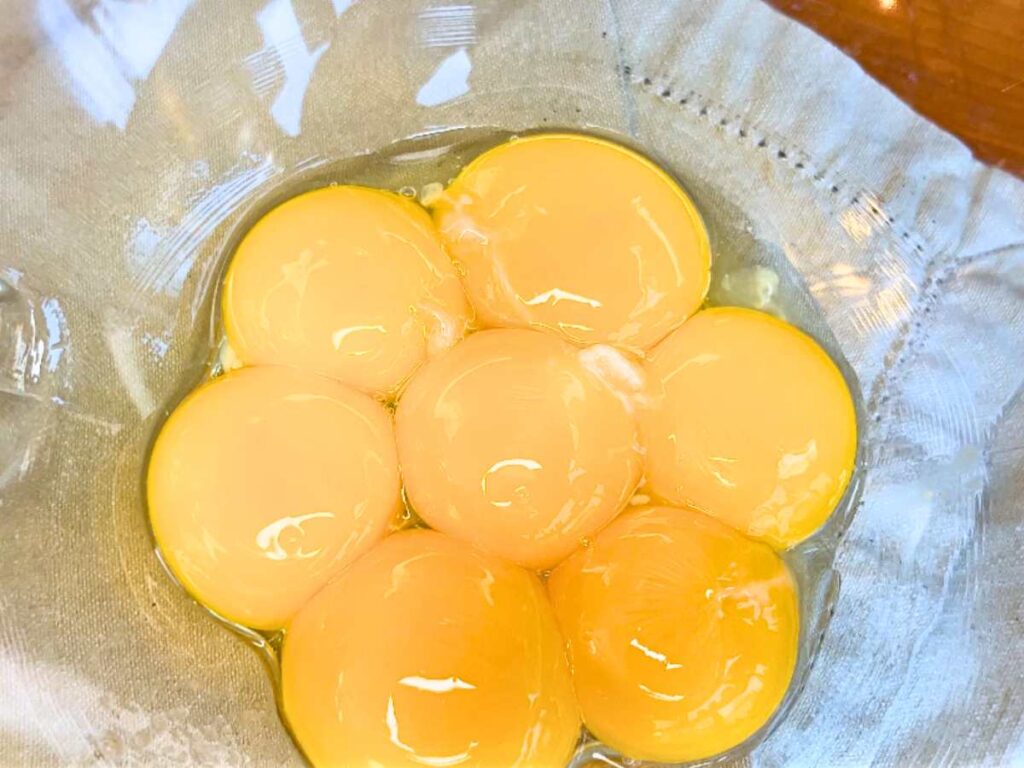
6. Whisk the milk, slowly and gradually, into the egg mixture, a little at a time. This is going to temper the eggs. Once you have about half into the eggs, pour the whole mixture back into the pot.
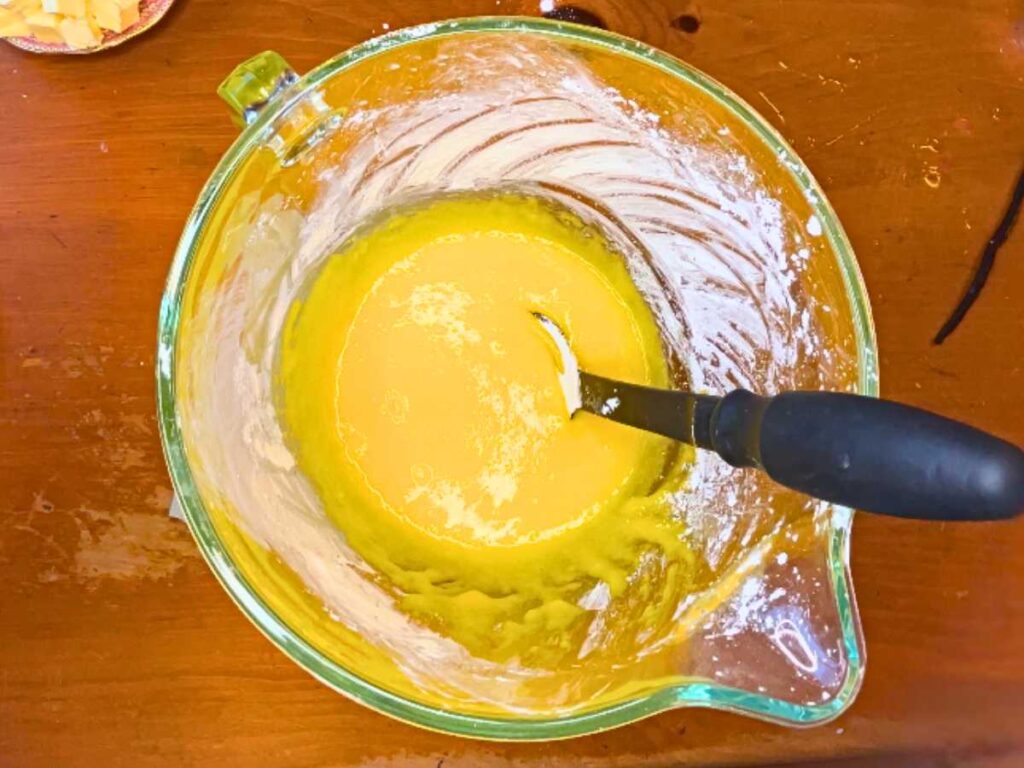
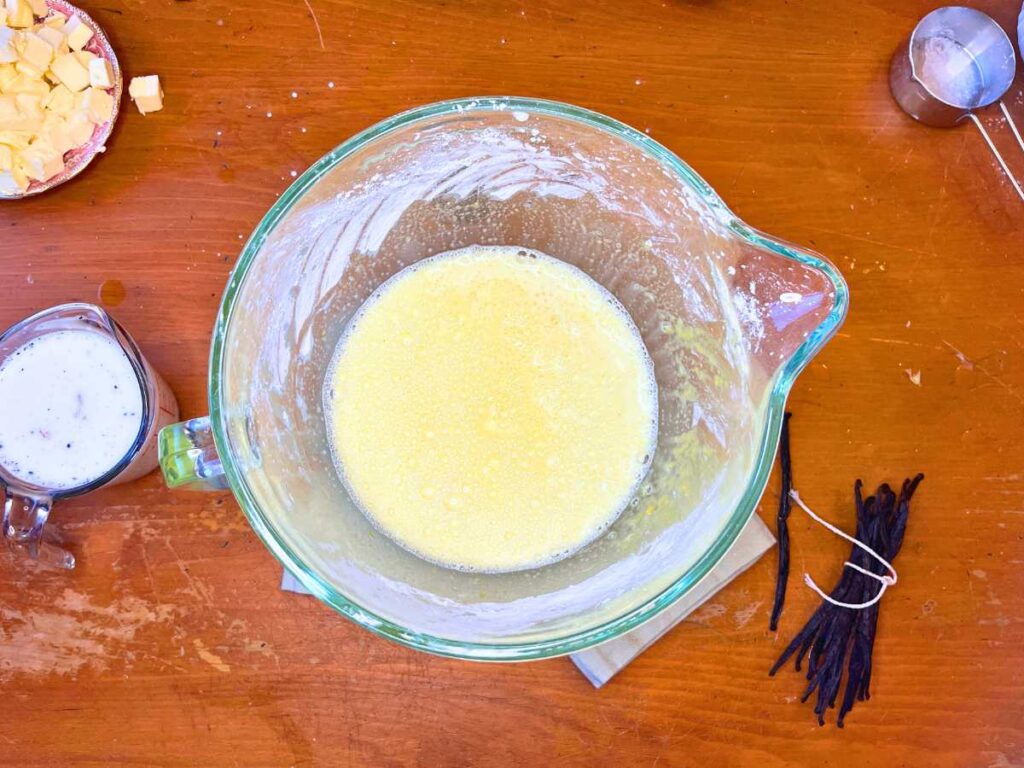
Cooking and finishing
- Return to the stove, over medium heat.
- Whisking constantly, watch for the changes in consistency of the mixture. The mixture will start to thicken and become glossy. As soon as you see a few bubbles, from it starting to simmer, remove from the heat.
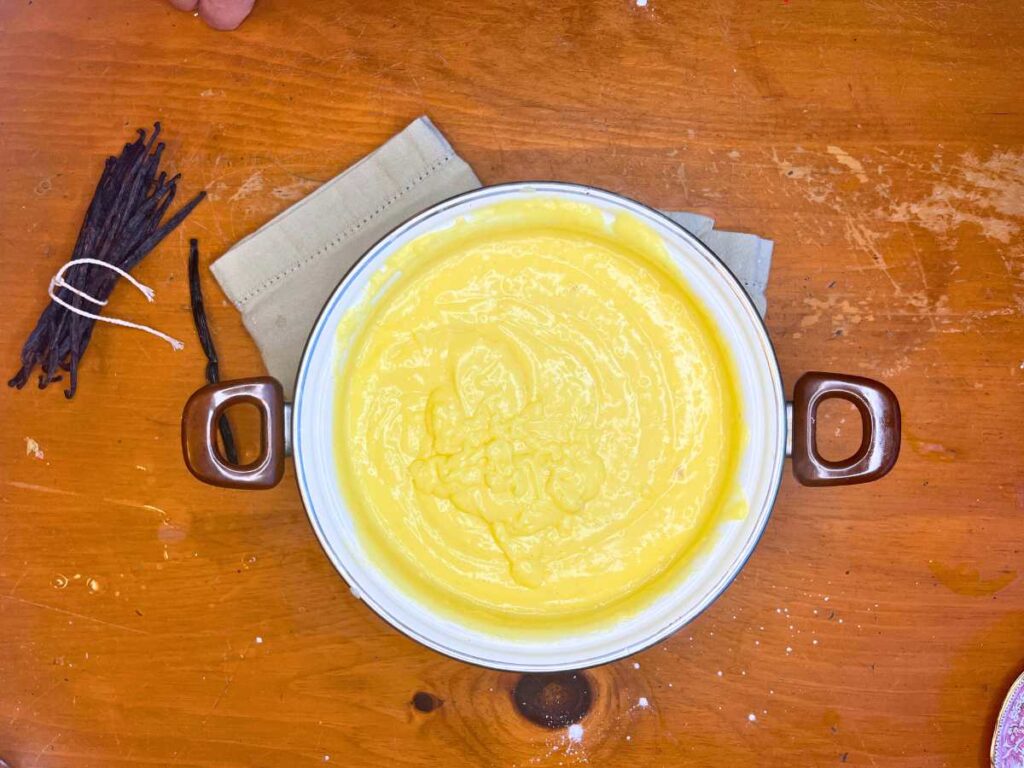
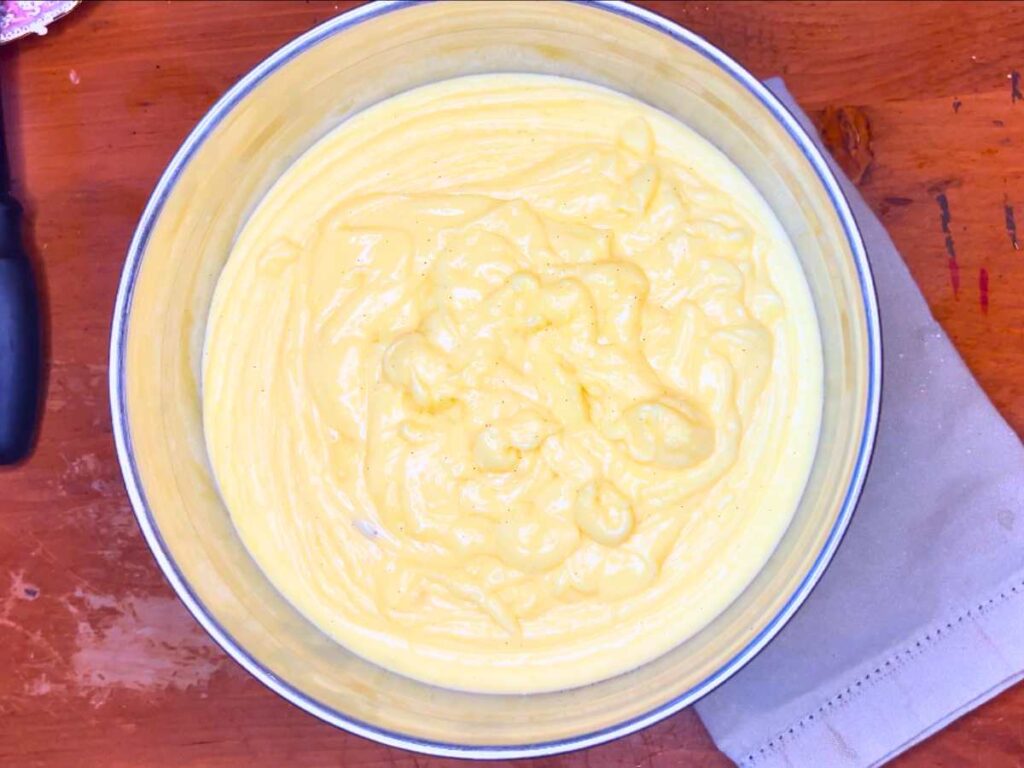
3. Add and whisk in the cold cubed butter. This will immediately cool and stop the cooking process and will add an extra creamy, velvety, texture to the mixture.
4. Allow to cool. Place a sheet of plastic wrap right on top of the cream to prevent a skin from forming.
5. Once it is at room temperature, use it in your favourite dessert



Easy Rich Pastry Cream
A rich and velvety smooth vanilla pastry cream. Perfect for filling pastries, doughnuts, and even pies.
Ingredients
- 4 cups milk (Nothing lower than 2%) 1000 ml
- Seeds from 1 vanilla bean
- ¾ cup sugar 150 g
- ½ cup cornstarch 60 g
- 12 egg yolks
- ½ cup cold butter cut into cubes 115 g
Instructions
- Add the milk to a sauce pot over medium heat.
- Cut open and remove the seeds from one vanilla bean and add to the pot. If you don't have a vanilla bean use 1 tsp vanilla bean paste, or 2 tsp of vanilla extract.
- Allow the mixture to steam but remove from heat just before you see it start to simmer.
- Remove from heat and set aside to steep with the vanilla.
- Meanwhile, to a medium bowl, add the sugar, cornstarch, and egg yolks. Whisk until the mixture looks light and creamy.
- Whisk the milk, slowly and gradually, into the egg mixture, a little at a time. This is going to temper the eggs. Once you have about half into the eggs, pour the whole mixture back into the pot.
- Return to the stove, over medium heat.
- Whisking constantly, watch for the changes in consistency of the mixture. The mixture will start to thicken and become glossy. As soon as you see a few bubbles, from it starting to simmer, remove from the heat.
- Add and whisk in the cold cubed butter. This will immediately cool and stop the cooking process and will add an extra creamy, velvety, texture to the mixture.
- Allow to cool. Place a sheet of plastic wrap right on top of the cream to prevent a skin from forming.
- Once it is at room temperature, use it in your favourite dessert
Notes
Fold together equal parts pastry cream with whipped cream for a delicious Diplomate cream. Perfect for filling desserts.
Nutrition Information
Yield
24Serving Size
1Amount Per Serving Calories 96Total Fat 6gSaturated Fat 3gTrans Fat 0gUnsaturated Fat 3gCholesterol 103mgSodium 35mgCarbohydrates 9gFiber 0gSugar 6gProtein 1g
Looking for ways to use pastry cream, try one of these! How to make Classic Profiteroles,
Don’t forget to sign up to get all of the latest vintage recipes and old-fashioned skills right to your inbox. Gain access to the FREE printablesFree Printables library.
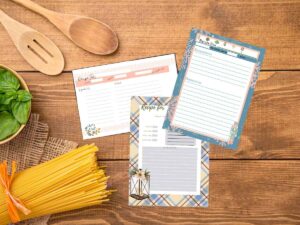

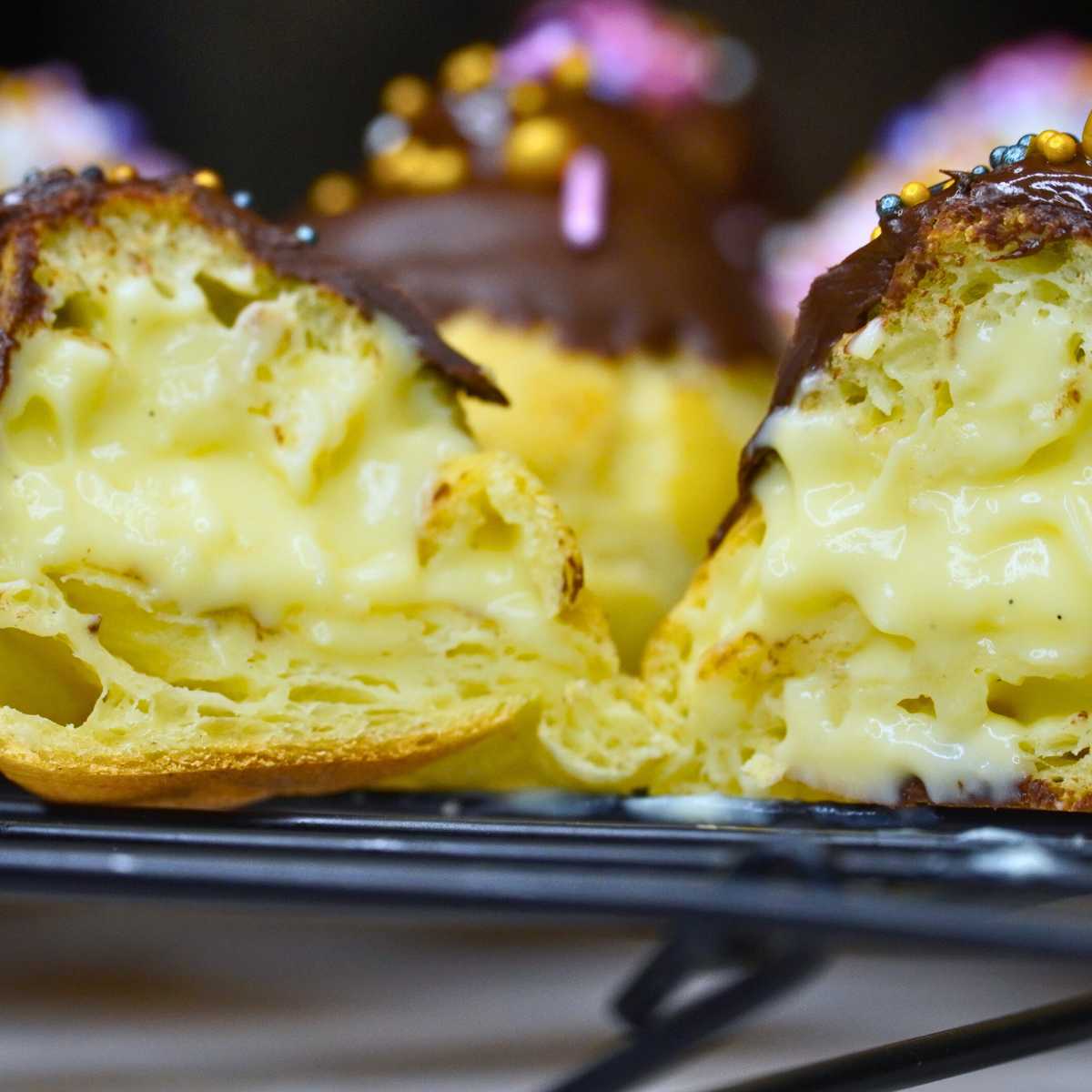

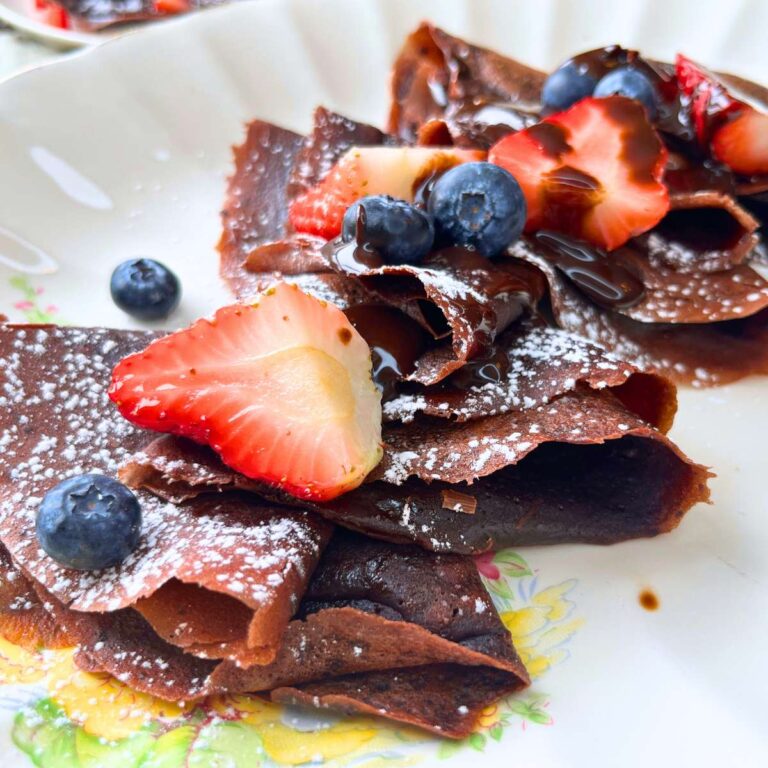
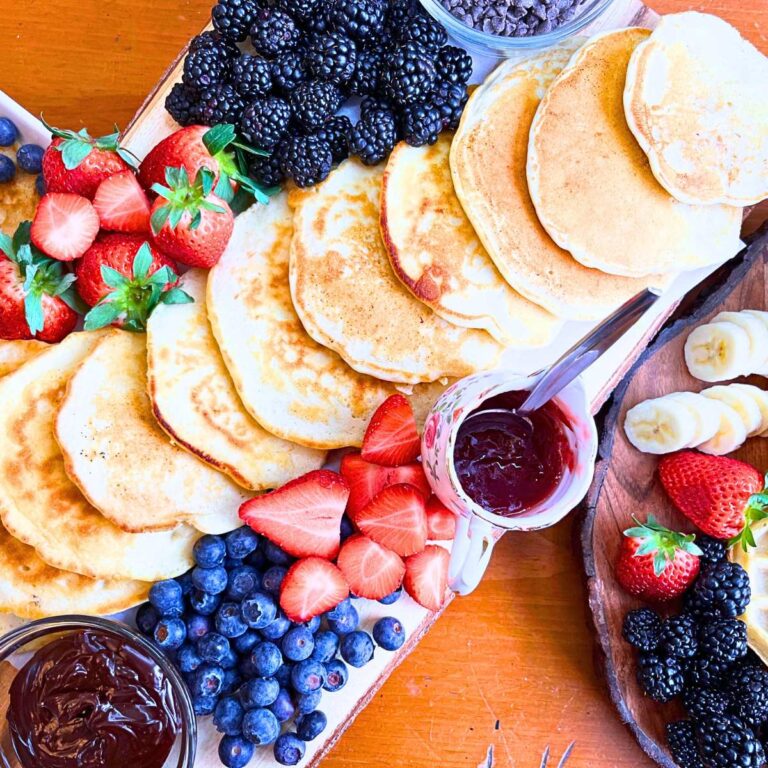

2 Comments